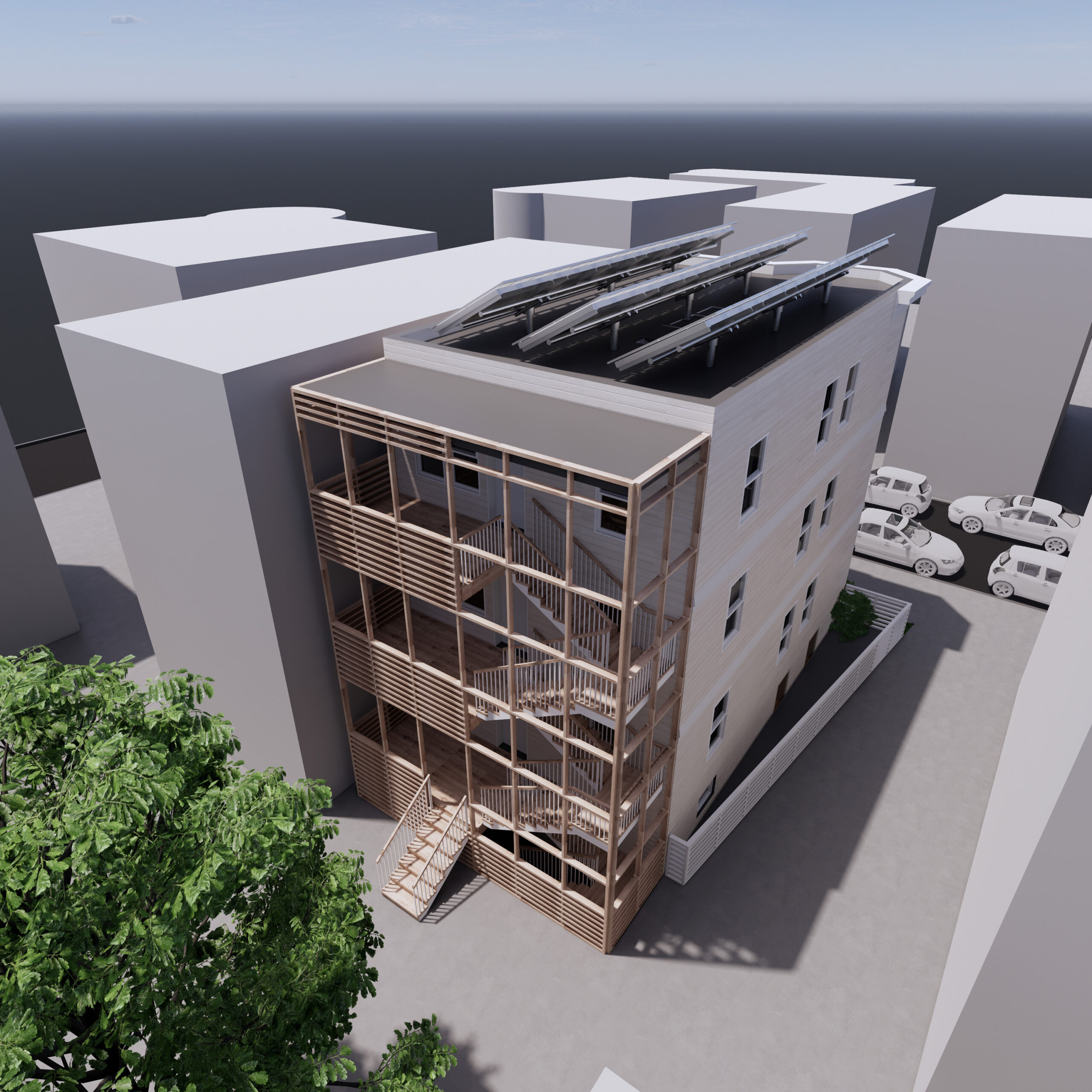Retrofit is one of the most sustainable approaches that architects can take towards creating new housing. Unlike new build construction, retrofitting utilizes existing structures and integrates modern, energy-efficient technologies. The existing homes to choose from are plentiful; across the United States, an expansive stock exists of 19th and 20th-century residential structures. The triple-decker housing typology alone makes up thousands of units in Massachusetts and the greater New England region. These three-story, wood-constructed structures usually house three separate units – one apartment per floor.
These building’s extensive inventory poses the potential for scalable interventions that could elevate an entire city’s energy efficiency. Perceiving this, the Massachusetts Clean Energy Center organized the Triple Decker Design Challenge, open to architecture firms and students from across the country. The prompt advertised for the development of a net-zero energy prototype that could be imitated across various sites. The design was to complement the triple-decker’s original design and maintain the three-unit arrangement while adding an additional unit in the existing basement.
The design challenge’s focus – that of sustainability in multi-family housing – is one shared by DRAW and led us to submit a proposal to the competition. Our all-electric retrofit design maintains part of the existing façade and adds a wooden screening system that modernizes the design, integrates solar shading, and creates resident privacy. The renovated floor plans optimize the efficiency and layout of the building systems across all levels and create the addition of semi-private patio spaces. Energy efficiency measures – beyond the solar shading device – include improved thermal resistance, a solar hot water heater, solar panels, and a water cistern, and the design both improves indoor air quality while reducing noise pollution and heating costs. Able to be replicated for other existing triple-deckers, our submission demonstrates an innovative approach that delivers additional value and income to the building owner.
To reduce our embodied carbon impact, we employed two strategies. The first and most important of those is keeping as much of the existing structure in place as possible, and all existing structure and sheathing were designed to be maintained. Secondly, the team worked to select materials that balanced performance and embodied carbon. High-performing, low-impact insulations were selected, and wood from sustainably managed forests was utilized in our screen wall and patio construction. The existing basement space was utilized to create an additional apartment without the impact of new construction. DRAW’s retrofit would also include the creation of a planted area that grew approximately 12‐24 square feet of native woody shrubs. This foundation planting bed can grow native shrubs such as inkberry, winterberry, or other woody species recommended by the Massachusetts Office of Coastal Zone Management. Woody plants sequester more carbon than grasses or perennials. Shrubs grow much faster than trees and are powerful carbon sequestration engines.
DRAW continues to explore innovative ways to make our cities more sustainable!





